Red bananas are a unique and nutrient-rich variety of banana that are native to Southeast Asia. They are smaller and denser than yellow bananas and have a mildly sweeter flavor. In addition to their culinary uses, red bananas have been used for medicinal purposes for centuries.
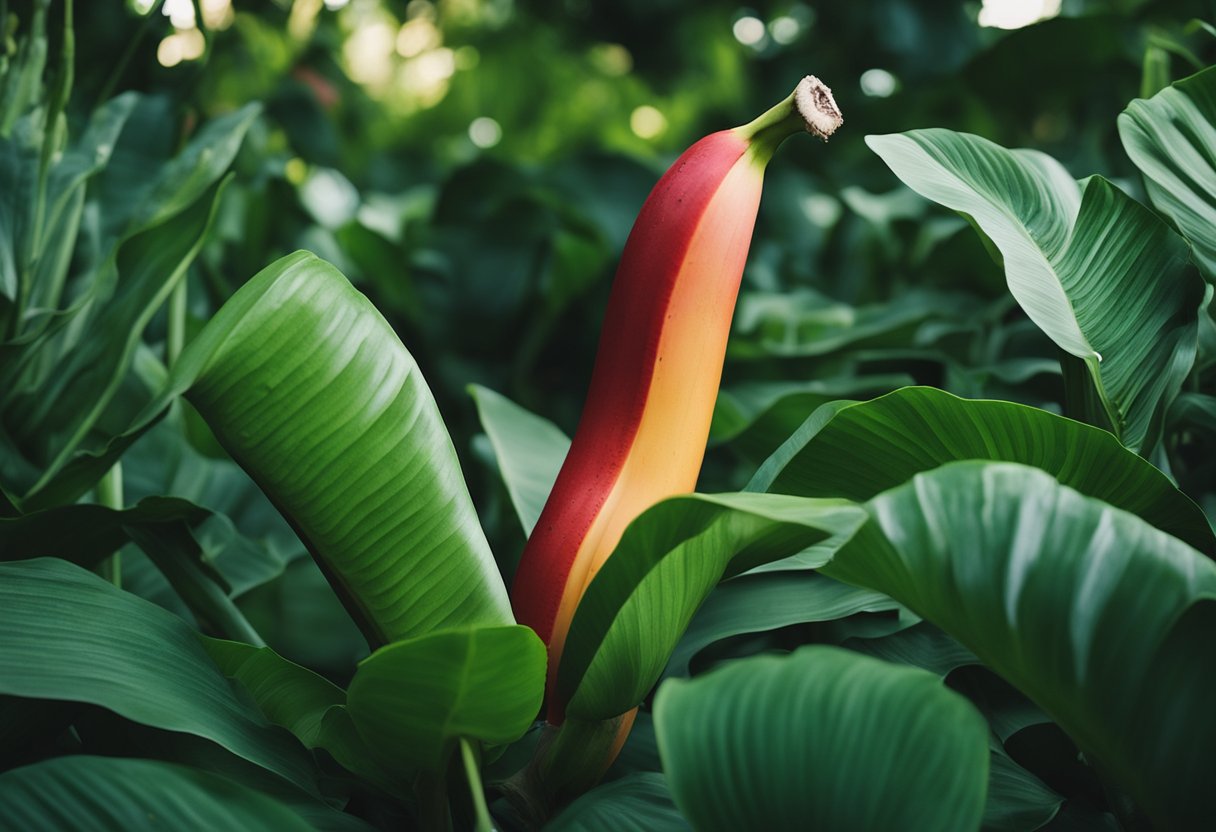
Red bananas are a good source of vitamins and minerals, including vitamin C, vitamin B6, potassium, and magnesium. They also contain antioxidants that can help protect against cellular damage and reduce the risk of chronic diseases such as heart disease and cancer. Some studies have also suggested that red bananas may have anti-inflammatory properties and could be beneficial for people with conditions such as arthritis and asthma.
Key Takeaways
- Red bananas are a unique and nutrient-rich variety of banana that are native to Southeast Asia.
- Red bananas have been used for medicinal purposes for centuries and may have anti-inflammatory properties.
- Red bananas are a good source of vitamins and minerals, including vitamin C, vitamin B6, potassium, and magnesium.
Nutritional Profile
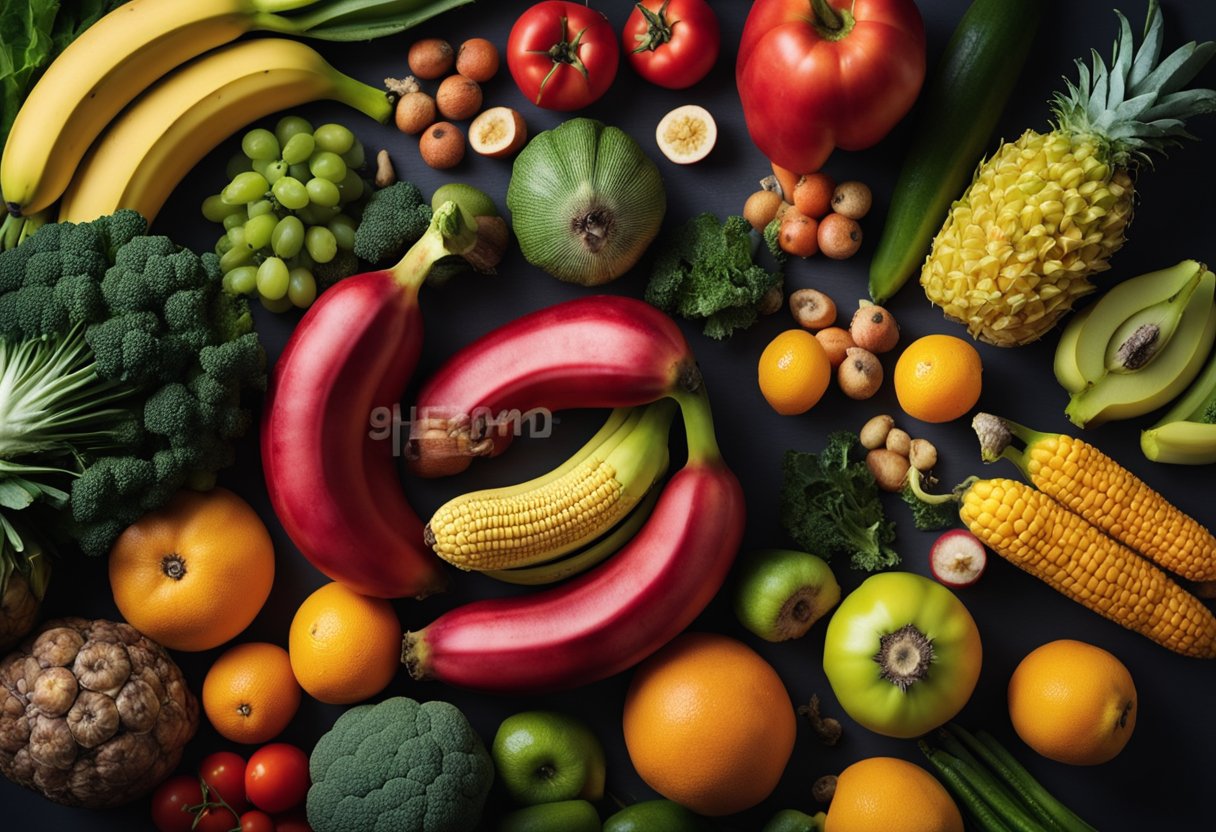
Red bananas are a delicious and nutritious fruit that are loaded with a variety of essential vitamins and minerals. They are a good source of dietary fiber, which is essential for maintaining digestive health. Red bananas also contain a range of antioxidants and carotenoids, which are important for protecting the body against free radical damage.
Vitamins and Minerals
Red bananas are particularly high in vitamin C, which is essential for immune function and skin health. A medium-sized red banana provides about 15% of the daily recommended intake of vitamin C. They are also a good source of vitamin B6, which is important for brain function and the production of red blood cells.
In addition to vitamins, red bananas are also rich in minerals such as potassium, magnesium, and iron. Potassium is essential for maintaining healthy blood pressure and heart function, while magnesium is important for bone health and energy production. Iron is essential for the production of red blood cells and the prevention of anemia.
Caloric and Macronutrient Content
Red bananas are relatively low in calories and fat, making them an excellent choice for those who are watching their weight. A medium-sized red banana contains approximately 105 calories, 27 grams of carbohydrates, and 3.1 grams of fiber. They are also a good source of protein, with about 1.3 grams per medium-sized banana.
Overall, red bananas are a delicious and nutritious fruit that are packed with essential vitamins, minerals, and antioxidants. They are a great addition to any healthy diet, and can be enjoyed as a snack or used in a variety of recipes.
Health Benefits

Red bananas are not only delicious but also have a variety of health benefits. They contain antioxidants that help fight free radicals and reduce inflammation in the body. Red bananas are also a good source of energy and can help improve cardiovascular health.
Cardiovascular Health
Red bananas have been shown to improve heart health and reduce the risk of heart attacks and strokes. They contain potassium, which helps regulate blood pressure and maintain healthy blood vessels. Red bananas also have a low glycemic index, which means they do not cause a rapid spike in blood sugar levels.
Digestive Wellness
Red bananas are high in fiber, which is essential for digestive health. They can help prevent constipation and improve bowel movements. Red bananas also contain prebiotics, which help promote the growth of healthy gut bacteria and improve overall digestive wellness.
Weight Management
Red bananas are a great addition to any weight loss diet. They are low in calories and high in dietary fiber, which can help increase feelings of fullness and reduce overall calorie intake. Red bananas also have a low glycemic index, which means they do not cause a rapid spike in blood sugar levels and can help regulate metabolism.
Blood Sugar Regulation
Red bananas have a low glycemic index, which means they do not cause a rapid spike in blood sugar levels. This can help regulate blood sugar levels and reduce the risk of diabetes. Red bananas also contain fiber, which can help slow down the absorption of sugar into the bloodstream.
Immune Support
Red bananas are rich in vitamin C and antioxidants, which can help boost the immune system and reduce the risk of infections. They also contain carotenoids, such as beta-carotene and lutein, which are essential for eye health and immune support.
Eye Health
Red bananas contain carotenoids, such as beta-carotene and lutein, which are essential for eye health. These carotenoids help protect the eyes from damage caused by free radicals and reduce the risk of age-related eye diseases.
Comparisons with Yellow Bananas

Red bananas are often compared to yellow bananas, which are the most commonly consumed banana variety. While they share some similarities, there are also some notable differences between the two.
Nutritional Differences
When it comes to nutritional content, red bananas have some advantages over their yellow counterparts. According to Healthline, red bananas are higher in vitamin C, vitamin A, and fiber. Vitamin C is an antioxidant that helps protect the body against damage from free radicals, while vitamin A is important for maintaining healthy skin and eyesight. Fiber is essential for maintaining good digestive health.
Yellow bananas, on the other hand, are higher in potassium, which is important for regulating blood pressure and maintaining heart health. They are also a good source of vitamin B6, which is important for brain function and the production of hemoglobin, the protein that carries oxygen in the blood.
Taste and Texture
In terms of taste and texture, red bananas are often described as sweeter and creamier than yellow bananas. They have a softer texture and a slightly tangy flavor that some people find more appealing than the milder taste of yellow bananas.
Yellow bananas are typically eaten when they are fully ripe, whereas red bananas can be enjoyed at different stages of ripeness. When they are fully ripe, red bananas have a reddish-purple skin and a soft, creamy flesh that is sweet and slightly tangy. When they are less ripe, their flesh is firmer and their flavor is more tart.
Overall, both yellow and red bananas are nutritious and delicious fruits that can be enjoyed as part of a healthy diet. While they have some differences in nutritional content and taste, they are both excellent sources of vitamins, minerals, and fiber.
Culinary Uses

Red bananas are not only packed with nutrients but also have a delicious flavor that makes them a great addition to various dishes. Here are some culinary uses of red bananas:
Cooking and Baking
Red bananas can be used in various recipes, from sweet to savory. They are perfect for baking, as they add a unique flavor and aroma to cakes, muffins, and bread. They can also be added to pancakes and waffles for a tasty twist. When cooking, ripe red bananas can be used in curries, stews, and sauces to add a hint of sweetness.
Incorporating into Meals
Red bananas can be incorporated into meals in various ways. They are perfect for smoothies, as they add a creamy texture and a sweet flavor. They can also be added to salads, along with other fruits and vegetables, to add a burst of color and flavor. Sliced red bananas can be added to oatmeal or yogurt for a delicious and nutritious breakfast.
Here are some recipes that use red bananas:
- Red Banana Smoothie: Blend one ripe red banana with one cup of almond milk, one tablespoon of honey, and a handful of ice cubes for a refreshing and healthy smoothie.
- Red Banana Salad: Combine sliced red bananas, mixed greens, sliced strawberries, and crumbled feta cheese. Drizzle with balsamic vinaigrette for a tasty and healthy salad.
- Red Banana Bread: Mix mashed ripe red bananas with flour, sugar, eggs, and baking powder to make a delicious and moist banana bread.
Overall, red bananas are a versatile and delicious fruit that can be used in various recipes. They add a unique flavor and aroma to dishes and are packed with nutrients.
Potential Risks and Considerations
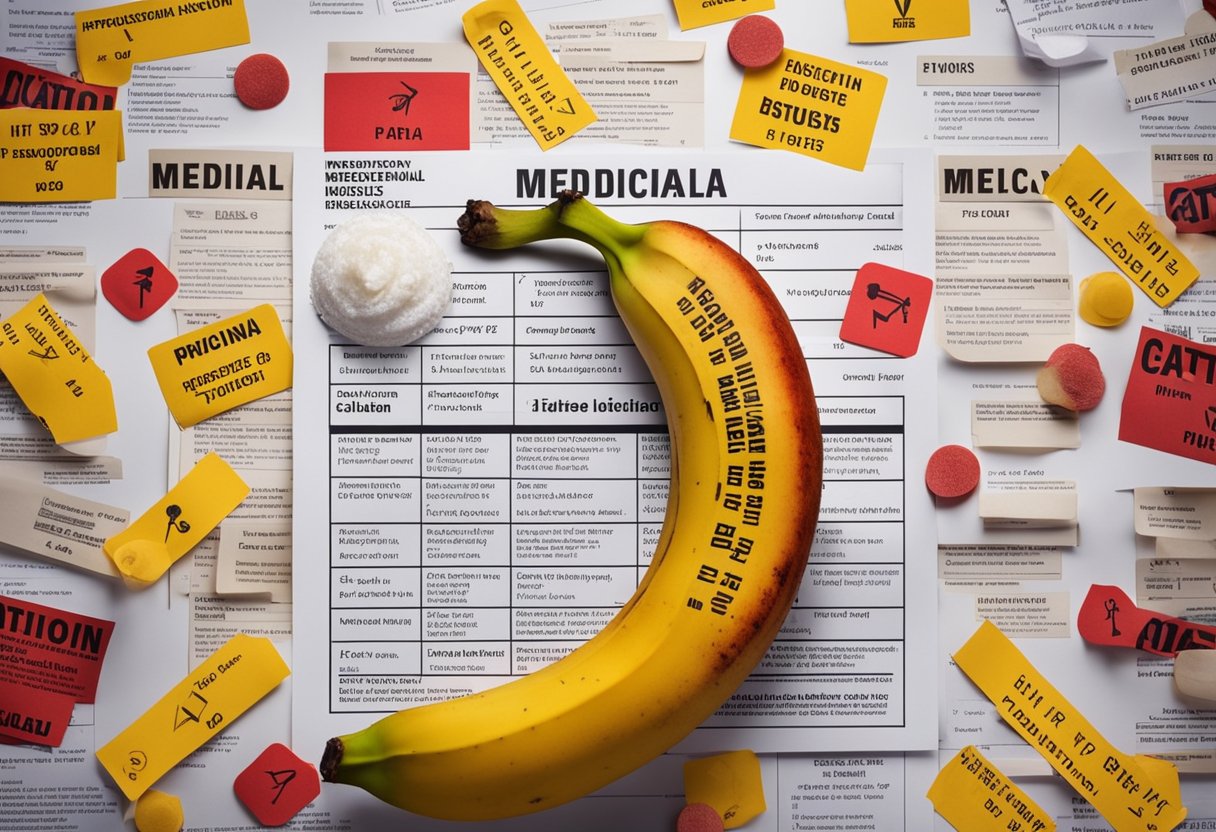
Red bananas are generally considered safe to eat, but there are some potential risks and considerations to keep in mind.
Allergies and Interactions
Individuals who are allergic to bananas may also be allergic to red bananas. Symptoms of an allergic reaction can include itching, swelling, hives, and difficulty breathing. If you experience any of these symptoms after eating red bananas, seek medical attention immediately.
Red bananas may also interact with certain medications, including those used to treat high blood pressure and diabetes. If you are taking any medications, it is important to talk to your doctor before adding red bananas to your diet.
Overconsumption Effects
While red bananas are a healthy addition to most diets, overconsumption can lead to negative effects. Red bananas are high in fructose, which can cause a spike in blood sugar levels. Individuals with diabetes or other blood sugar disorders should consume red bananas in moderation.
Red bananas are also high in sucrose and sodium, which can contribute to weight gain and high blood pressure. It is important to balance red banana consumption with other healthy foods and exercise to maintain a healthy weight and blood pressure.
In summary, red bananas are a nutritious and delicious fruit with many potential health benefits. However, individuals with allergies, blood sugar disorders, or other medical conditions should talk to their doctor before adding red bananas to their diet. Moderation is key when it comes to enjoying the many benefits of red bananas.
Cultural Significance
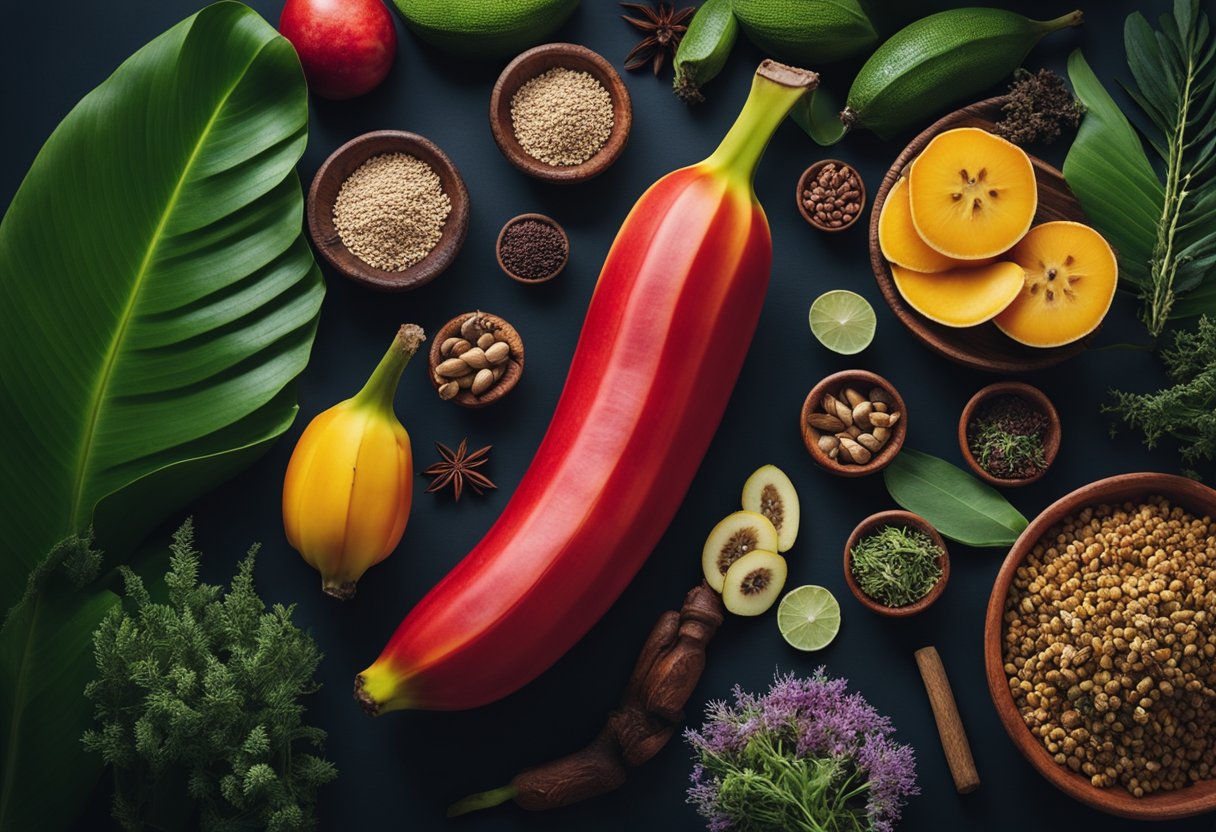
Red bananas have been an important part of the culture and traditions of many tropical regions, especially Southeast Asia. They are not only used as a food source but also have significant cultural and traditional importance.
Traditional Medicinal Uses
Red bananas have been used in traditional medicine for centuries to treat various ailments. They are known to have anti-inflammatory properties that can help relieve pain and swelling. Red bananas are also believed to be effective in treating upset stomach, heartburn, and nausea.
In some cultures, red bananas are used to treat menstrual cramps and other menstrual-related issues. They are also believed to help with fertility and are often given to women who are trying to conceive.
Symbolism and Traditions
Red bananas are often used in cultural and religious ceremonies in Southeast Asia. They are believed to represent good luck, prosperity, and fertility. In some cultures, red bananas are given as offerings to the gods during religious ceremonies.
Red bananas are also used in traditional dances and performances. In some cultures, dancers wear costumes made from red bananas to symbolize fertility and abundance.
Overall, red bananas have significant cultural and traditional importance in many tropical regions. They are not only a source of food but also a symbol of cultural identity and tradition.
Sourcing and Availability
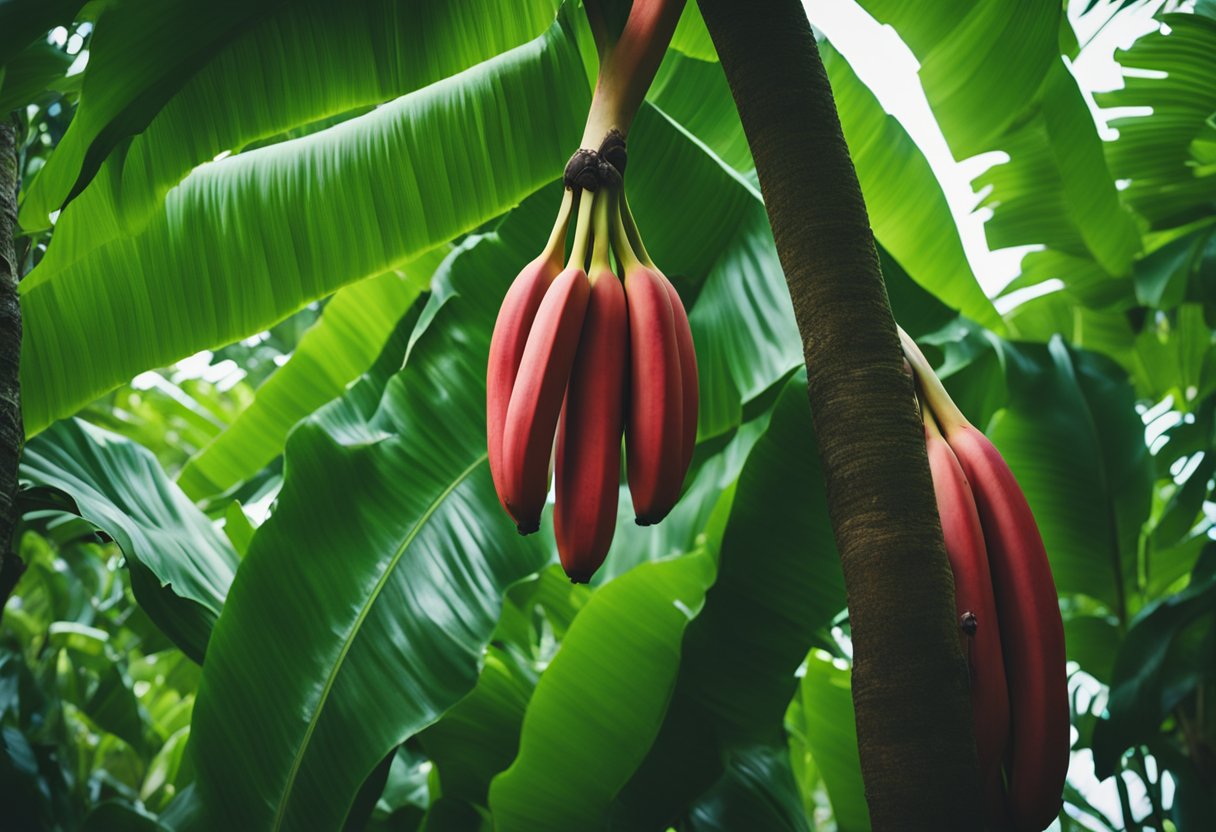
Red bananas are a popular fruit that is widely available in many parts of the world. They are grown in tropical regions, with Southeast Asia being one of the largest producers of red bananas.
Growing Regions
Red bananas are grown in many parts of the world, including Southeast Asia, South America, and the Caribbean. In Southeast Asia, countries such as the Philippines, Indonesia, and Malaysia are major producers of red bananas. In South America, countries such as Ecuador, Colombia, and Brazil are known for their red banana production.
Red bananas are generally available year-round in most regions where they are grown. They can be found in many supermarkets and grocery stores, as well as in local markets and specialty stores.
Due to their popularity, red bananas are also available in dried and powdered forms. These products are often used in the production of health supplements and other food products.
Overall, red bananas are a widely available fruit that can be found in many parts of the world. They are a popular choice for those looking for a unique and flavorful fruit that is also rich in nutrients.
Frequently Asked Questions

What are the health benefits of red bananas for men?
Red bananas are rich in antioxidants, vitamin C, and fiber, which can help improve heart health and reduce the risk of chronic diseases. Additionally, the high potassium content in red bananas can help maintain healthy blood pressure levels, which is beneficial for men’s health.
Are there any negative effects of consuming red bananas?
While there are no known negative effects of consuming red bananas, it is important to note that like all fruits, they do contain natural sugars. Therefore, individuals with diabetes or those watching their sugar intake should consume red bananas in moderation.
How do red bananas support women’s health?
Red bananas contain high levels of iron, which is essential for women’s health. Iron helps to maintain healthy blood levels, prevent anemia, and support overall health during menstruation.
Can eating red bananas affect body weight?
Red bananas are a low-calorie fruit and are a great addition to any healthy diet. The fiber content in red bananas can also help promote feelings of fullness and reduce overeating, which can aid in weight management.
What are the skin health benefits of red bananas?
Red bananas contain high levels of vitamin C, which is essential for collagen production and maintaining healthy skin. Additionally, the antioxidants in red bananas can help protect the skin from damage caused by free radicals and promote overall skin health.
How do red bananas compare to yellow bananas in terms of health benefits?
While both red and yellow bananas offer similar health benefits, red bananas are higher in antioxidants and vitamin C. Additionally, red bananas have a lower glycemic index than yellow bananas, making them a better option for individuals with diabetes or those watching their sugar intake.